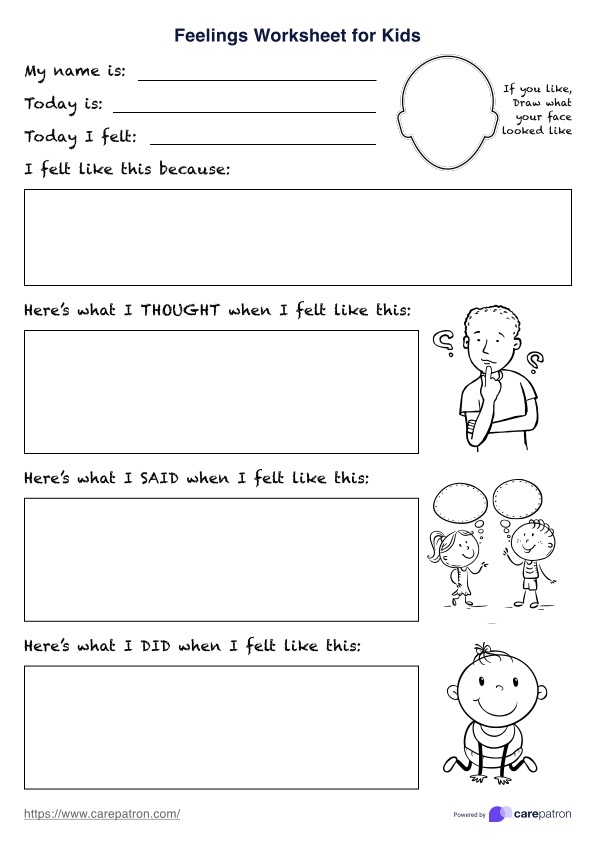The age range of children this worksheet can benefit spreads from pre-school age to adolescents. All you need to know is the assistance you provide the child as they complete the worksheet. For kids aged 4-6, you may need to discuss each question and write down the answers for the child, whereas for older kids from 6-10 years old, they may be able to complete the worksheet independently and discuss with you as they go or once they have completed it.

Feelings Worksheet For Kids
Kids can struggle to cope with big feelings, but you can help them understand and problem-solve their emotions through alternative thoughts, phrases, and actions using our Feelings Worksheet for Kids.
Feelings Worksheet For Kids Template
Commonly asked questions
This feelings worksheet is best used the same day the child has had a behavioral issue, emotional experience, or any big feeling that they would benefit from working through! Using it sooner rather than later will help ensure the child's memory of the event is fresh, and they can start working on alternative thoughts and behaviors right away while the ideas are still in their minds.
It's a good idea to have some examples in mind for things your client can say, do, or think next time they encounter a similar situation. Some examples of things your client can try next time are taking a deep breath, counting to 10, asking an adult for help, telling an adult how they feel, walking away, or finding a quiet place to calm down.
EHR and practice management software
Get started for free
*No credit card required
Free
$0/usd
Unlimited clients
Telehealth
1GB of storage
Client portal text
Automated billing and online payments











